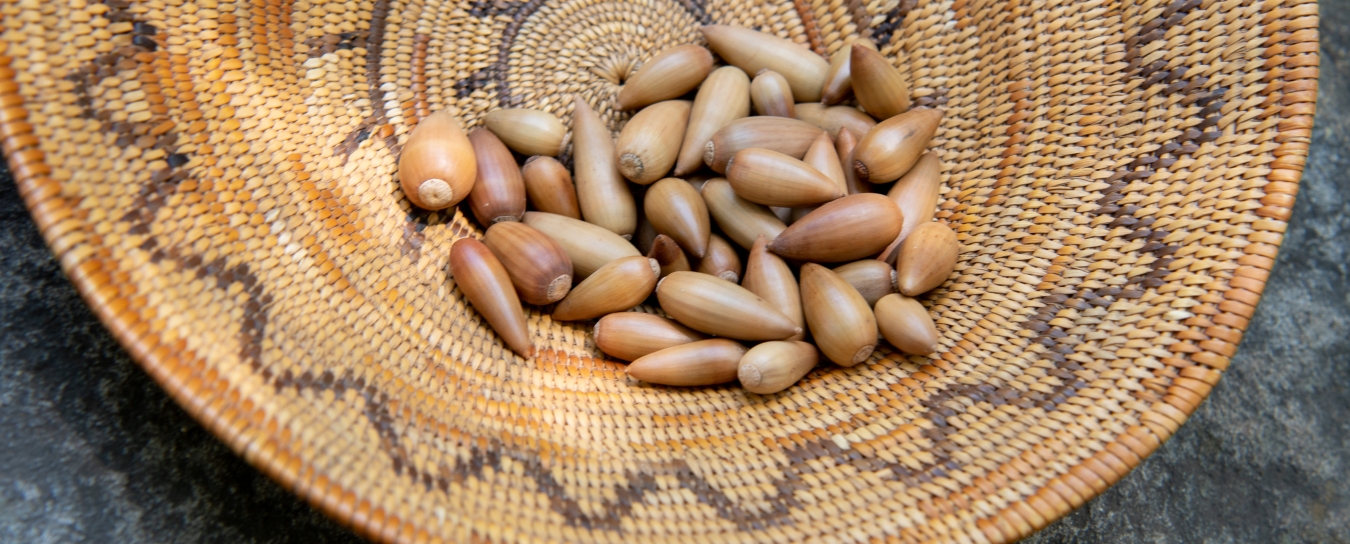
Anthropology
Check our anthropology FAQ for information about artifacts and more. Our Chumash Life pages for teachers and students provide a basic introduction to some aspects of traditional daily life.
- Anthropology
- Rocks & Fossils
- Invertebrates
- Vertebrates
- Botany
- Astronomy
- Fungi
- General
- Recently Asked
Possible Chumash artifact
Hello SB Natural History Museum,
I think it's wonderful that you provide this ask-a-curator service, thank you. My question:
My daughter and I found a rock that looks a lot like the tip of a Chumash stone knife or maybe a spear head or maybe a scraping tool. The stone looks like flint to me but I'm no geologist. It was found right at the water's edge at Devereaux Point. Attached are two pictures showing both sides. What do you think? Is it an artifact or just a plain old rock.
Many thanks,
Brent
Curator Response
Hi Brent,
Thank you for sharing this with us. This rock appears to be a thin lamination of Monterey chert between some softer shale or calcareous material.
Has it really been worked by humans, or is it just naturally worn? I would have to see the object up close to say for sure, but the flake removals around the side look too irregular and shallow compared to intentionally-flaked bifaces. When this type of chert material is used to make bifacial tools (tools where flakes have been removed from both sides), such as arrowheads and knives, the first stage of flaking generally aims at removing that softer, hard to flake material from the faces. Short flakes, such as this rock has on it, reduce the possibility of adequately completing that stage of the process. However, a stone like that could have been used informally, whether first lightly chipped to sharpen the edge, or used as-is, causing subsequent minor flake removals through use.
A really important factor in determining whether this was a tool is the context in which it was found. If I found this on the bluffs or a dirt road between Gaviota and Goleta, where such gravels naturally occur in that size and form, I would be less likely to conclude it was cultural. If there were no other used or modified stones in the same context, that would be another reason to suppose it’s just natural. This is why it’s important that even the most simple flake tools are left where they are, so that future researchers can gather information about the whole context of what happened at that place in the past, of which such an item is only a small part.
If you took this home, it’s probably actually good that it doesn’t look like it’s necessarily an artifact! Artifacts (i.e. human-made, as opposed to naturally-formed objects) found on private property may only be taken with the owner’s permission. Artifacts found on public land can only be removed by researchers with restricted permits that ensure what they remove will add to public knowledge rather than taking away from it. State Parks’ policies, for instance, allow for anyone to pick up an interesting item and examine or photograph it, before returning it right back to where it was. If the item is the kind of fancy thing that someone might pick up and carry away, and it’s in the right on a trail, sometimes it’s good to move it just off a trail a couple feet. I always recommend contacting a park ranger to let them know where it is, so they can send one of their specialists out to document it and examine the surrounding context. Leaving items for researchers to study in context means we can all learn more about their history and cultural value.
I hope this information is useful to you. Thanks again for sharing your photographs, and keep your eyes open!
Associate Curator of Anthropology Brian Barbier, M.A.
Brent response:
Wow, thanks for all the detailed information. Sounds like its not an artifact but just a kind of neat rock.
Thank you for your detailed response,
Brent


